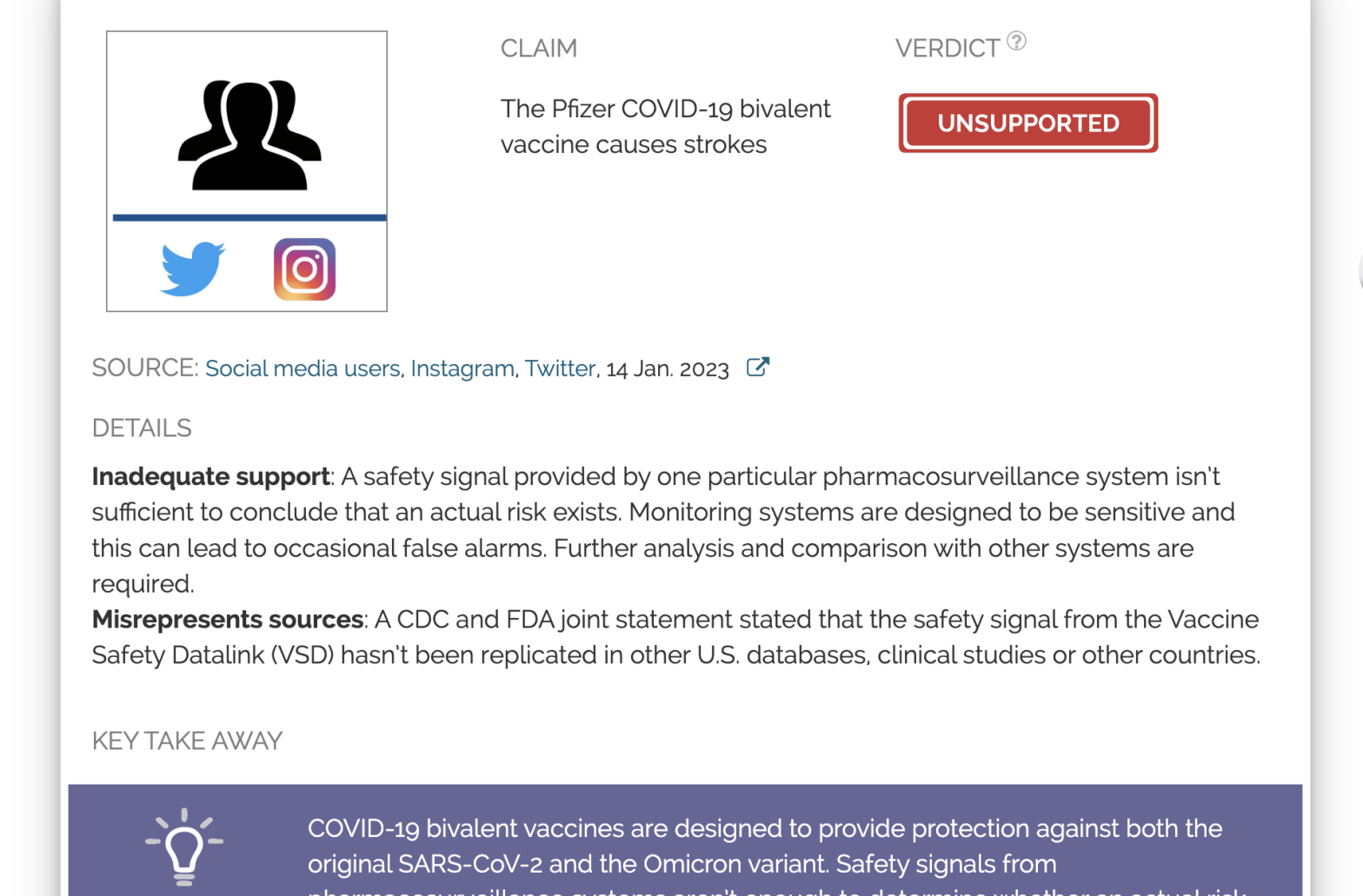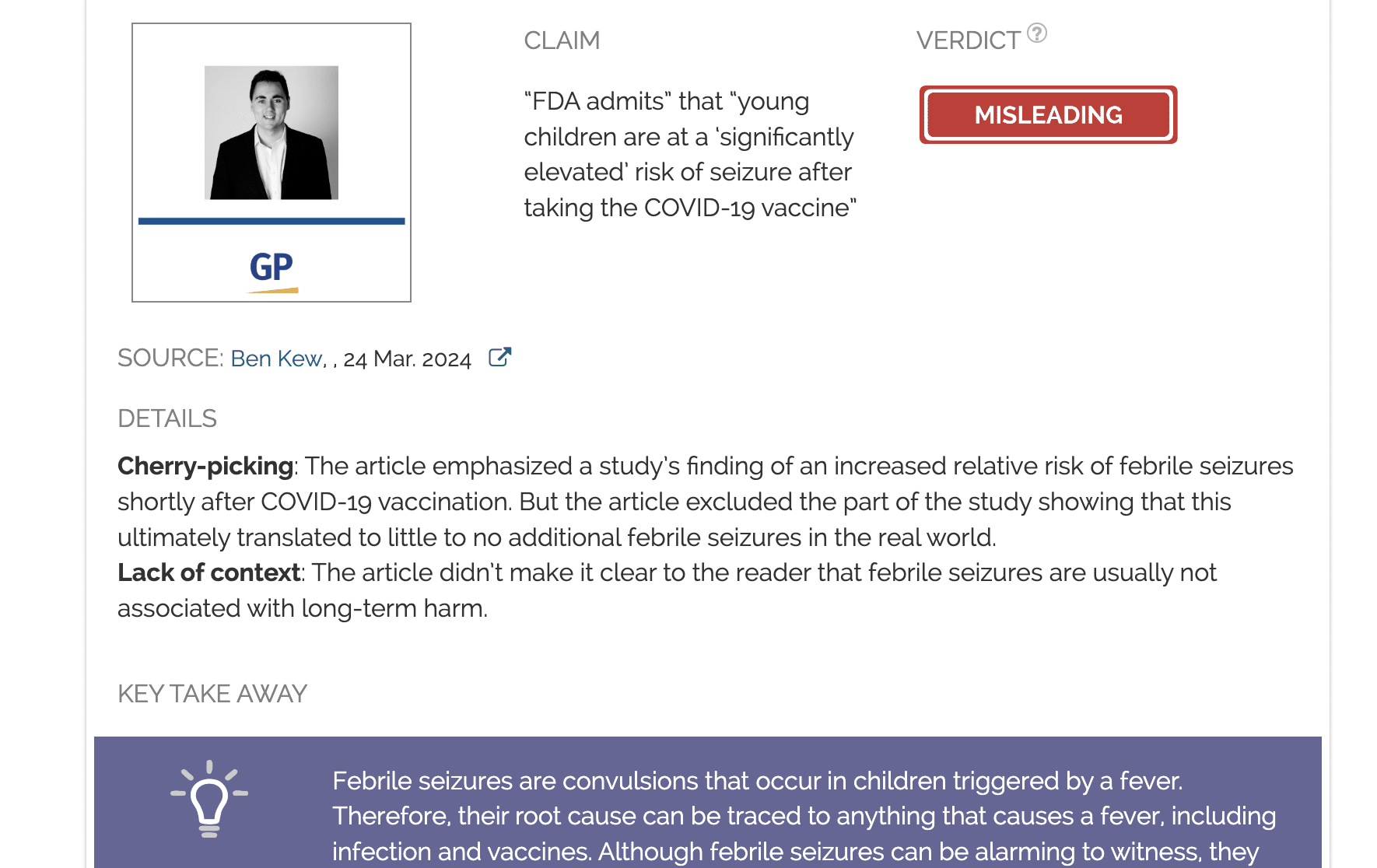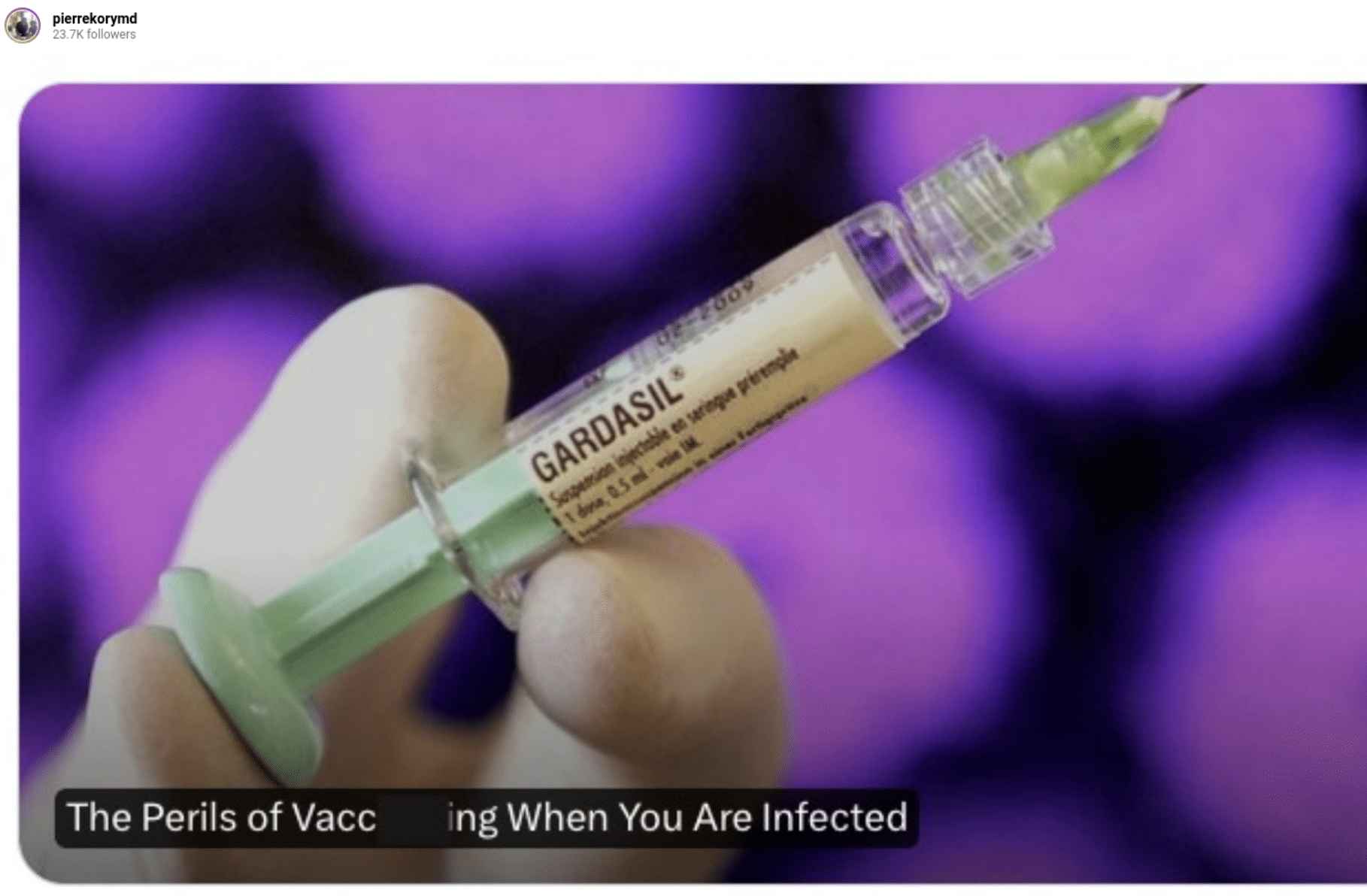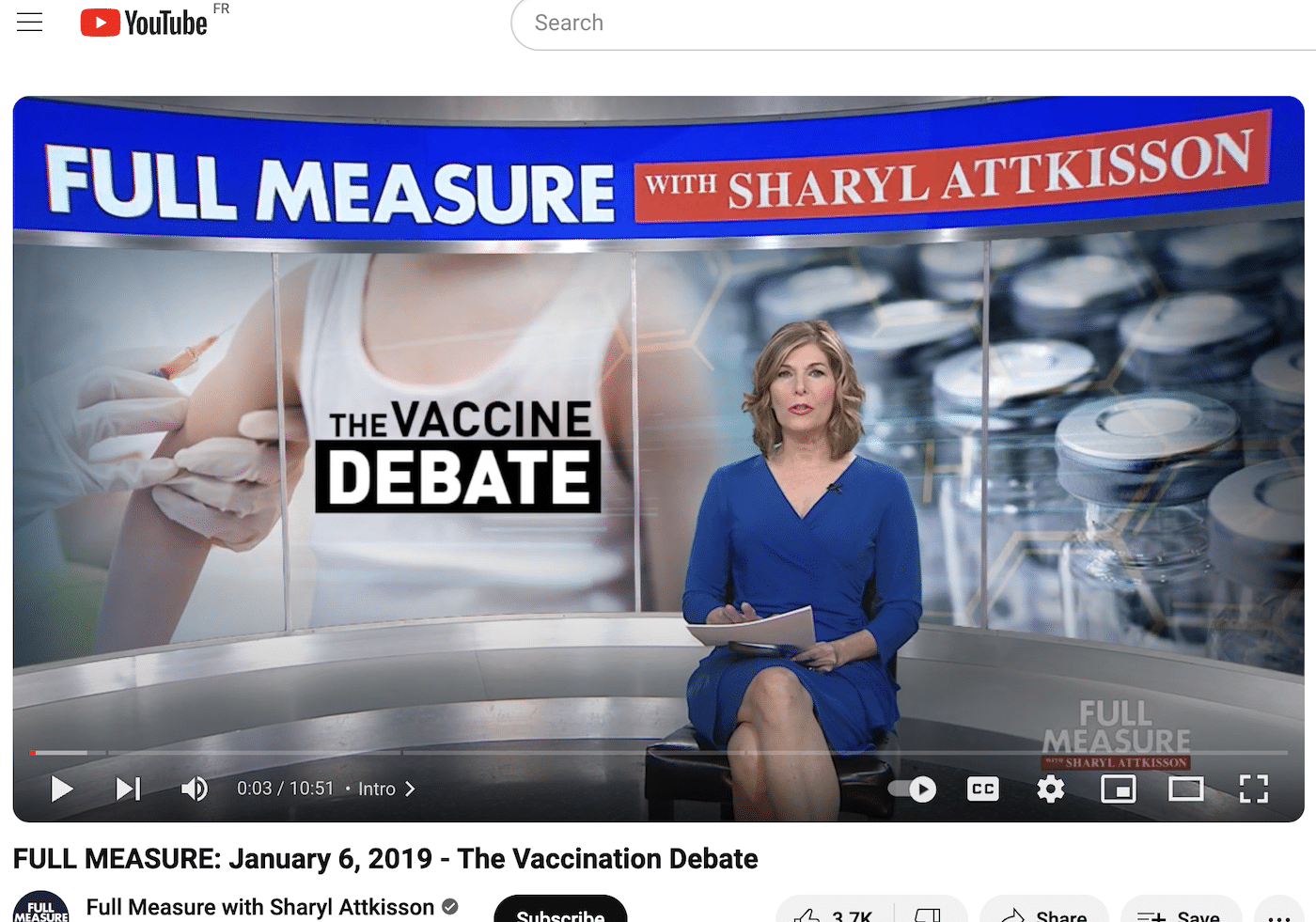- Health
The Pfizer bivalent vaccines are very unlikely to increase the risk of ischemic stroke, contrary to claims on social media
Key takeaway
COVID-19 bivalent vaccines are designed to provide protection against both the original SARS-CoV-2 and the Omicron variant. Safety signals from pharmacosurveillance systems aren’t enough to determine whether an actual risk exists. This requires additional investigation and comparison with other monitoring tools. The higher risk of stroke following vaccination detected in the VSD surveillance system hasn’t been confirmed in other systems nor in clinical studies.
Reviewed content

Verdict:
Claim:
The Pfizer COVID-19 bivalent vaccine causes strokes
Verdict detail
Inadequate support: A safety signal provided by one particular pharmacosurveillance system isn’t sufficient to conclude that an actual risk exists. Monitoring systems are designed to be sensitive and this can lead to occasional false alarms. Further analysis and comparison with other systems are required.
Misrepresents sources: A CDC and FDA joint statement stated that the safety signal from the Vaccine Safety Datalink (VSD) hasn’t been replicated in other U.S. databases, clinical studies or other countries.
Full Claim
The Pfizer COVID-19 bivalent vaccine causes strokes
Review
Vaccines are always subjected to monitoring, even after authorization or approval. This is to ensure that rare side effects that didn’t appear during clinical trials can be detected. This will allow public health authorities to take appropriate measures to warn the public.
On 13 January 2023, the U.S. Centers for Diseases Control and Prevention (CDC) and the U.S. Food and Drug Administration (FDA) released a joint statement explaining that one of their pharmacosurveillance systems had detected a “safety signal” with the Pfizer bivalent COVID-19 vaccines.
Specifically, the pharmacosurveillance network called Vaccine Safety Datalink (VSD) reported a possible elevated risk of ischemic stroke among older people within the three weeks following receipt of the bivalent vaccine. Of 550,000 people aged 65 and above who received the bivalent vaccines, 130 had a stroke within 21 days, although no deaths were reported. The VSD is a network of 13 health institutions scattered across the U.S. that provides clinical data on patients, which allows continuous monitoring of vaccine safety and a rapid detection of possible risks.
Numerous news outlets relayed the FDA/CDC statement. Many internet users then spun the information on social media in a way implying that COVID-19 vaccines were causing strokes (see also here and here). Some of the people who made that claim have propagated disinformation about COVID-19 or COVID-19 vaccines in the past, such as Simone Gold. However, this claim is unsupported. In fact, initial investigations from the CDC and the FDA suggest that this safety signal was a false alarm as already explained in the CDC/FDA statement.
Vaccine safety surveillance systems need to be sensitive enough to detect any possible risks. A higher sensitivity means that, sometimes, false alarms occur due to statistical flukes. As William Schaffner, an infectious disease expert at Vanderbilt University and member of the CDC Advisory Committee on Immunization Practices’ Covid-19 Vaccine Work Group, told CNN: “You want a surveillance system that occasionally sends up false signals. If you don’t get any signals, you’re worried that you’re missing stuff”.
In other words, a safety signal generated by the VSD alone isn’t enough to conclude that the vaccine does cause strokes in the elderly. This initial signal needs to be investigated. One way to do this is to check whether a similar effect was detected in other vaccine safety monitoring systems.
For example, the better-known Vaccine Adverse Event Reporting System (VAERS) database, another important vaccine safety monitoring database operated by the CDC and the FDA, reported no similar safety signal. The joint statement also added that two other studies, based on the Centers for Medicare and Medicaid Services database and the Veterans Affairs database, didn’t detect an elevated risk either.
Importantly, the Pfizer COVID-19 bivalent vaccine isn’t distributed in the U.S. alone. Other countries, such as European Union members, also approved the use of this vaccine. If the vaccine were increasing the risk of stroke, this should be observed in these countries as well. Yet none reported a similar safety signal, according to the CDC and the FDA.
As a result, the CDC and the FDA concluded that “the data currently suggests that it is very unlikely that the signal in VSD represents a true clinical risk”. Schaffner also highlighted that COVID-19 is much more dangerous that vaccination: “Undoubtedly, the risk of a whole series of adverse events, including hospitalization, is much, much greater with Covid-19 than it is from the vaccine”.
The CDC and the FDA emphasized that no change in vaccination practice is recommended, due to the absence of additional data confirming the initial safety signal. They announced a meeting on 26 January 2023 to further discuss the matter.



